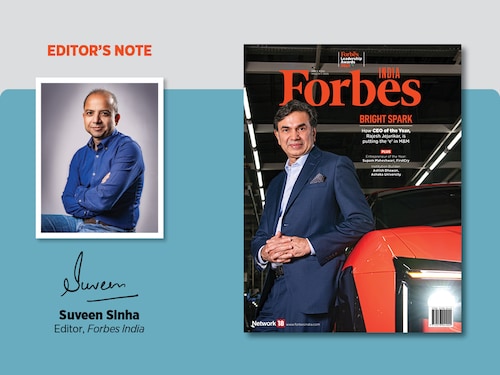FILA 2025: Tricky time needs trickier decision-making
The 14th edition of the Forbes India Leadership Awards celebrates the best of leadership, entrepreneurship, value creation and philanthropy


The founder of a newfangled artificial intelligence startup says his best coder is not even an engineer—either by qualification or by training. This chap, all of 19, has written 10,000 lines of code by using prompts. That makes the founder wonder if the days of engineers are numbered.
The head of a pharma company—who is about 35 years older than the founder mentioned above—says the only regret he has had in his entire career is not any deal gone wrong, but the occasions when he raised his voice at someone.
And the government efficiency office in the United States, headed by the never-out-of-headlines Elon Musk, wrote emails to government employees, asking them to list the five things they accomplished last week. “If I could say one thing to Elon Musk, it’s like, please put a dose of compassion in this," Bloomberg quoted Senator John Curtis as saying on CBS.
Whichever side of the divide you might be on in the context of engineers, government employees justifying their existence, or shouting in the workplace, you would probably agree these are tricky times. You would also probably agree that tricky times require trickier decision-making. These are also the times when leaders are needed the most.
At times, their leadership may be easy to overlook. For instance, anyone who has ever played cricket, or even merely watched the game, probably believes they could have captained the great West Indies team of the period 1975 to 1985 as well as Clive Lloyd did, because that team did not require any captaincy at all, because it was a team of 11 matchwinners. The counterview, which this writer subscribes to, is that it is more tricky to captain a team of 11 matchwinners—meaning 11 complex characters from (in the case of West Indies) four different nations who probably had a legitimately high sense of self-worth.
It would have been no less tricky to steer Mahindra & Mahindra (M&M), a vehicle manufacturer synonymous with a type of SUVs best expanded as sturdy utility vehicles, transition into the age of electric vehicles. Faced with the task, Rajesh Jejurikar and his team, as one of their early tasks, decided to wow everyone with their design. As described by Salil Panchal, they appear to have succeeded: When Panchal visited a residential area filled with gleaming Porches, Audis, and Ducatis, it was M&M’s BE6 that turned the young heads.
Fifteen years ago, Ashish Dhawan shocked his peers in the investment community by abruptly changing tracks and choosing the non-profit route. Neha Bothra reports on how Dhawan built institutions that look likely to last.
Rajiv Singh tells you about Supam Maheshwari’s journey from taking baby steps to giant strides over 15 years in a business that is anything but child’s play.
Jejurikar, Dhawan and Maheshwari are part of the package in your hands that celebrates the best of leadership, entrepreneurship, value creation and philanthropy. It is filled with stars and role models. You will find compelling stories and riveting lessons in it. I hope my other colleagues, who have done stellar work on the package but are not mentioned in this 550-word letter, will find enough leader-like generosity in them to forgive me.
Speaking of leadership, you will find a new face at the bottom right of this page. There is a good chance you will not like this face, but I do hope you will like the course Forbes India, the country’s premier business magazine, takes from here on.
We are ready with our response to these tricky times. Just come along for the ride.
Best,
Suveen Sinha
Editor,
Forbes India
First Published: Mar 01, 2025, 13:17
Subscribe Now